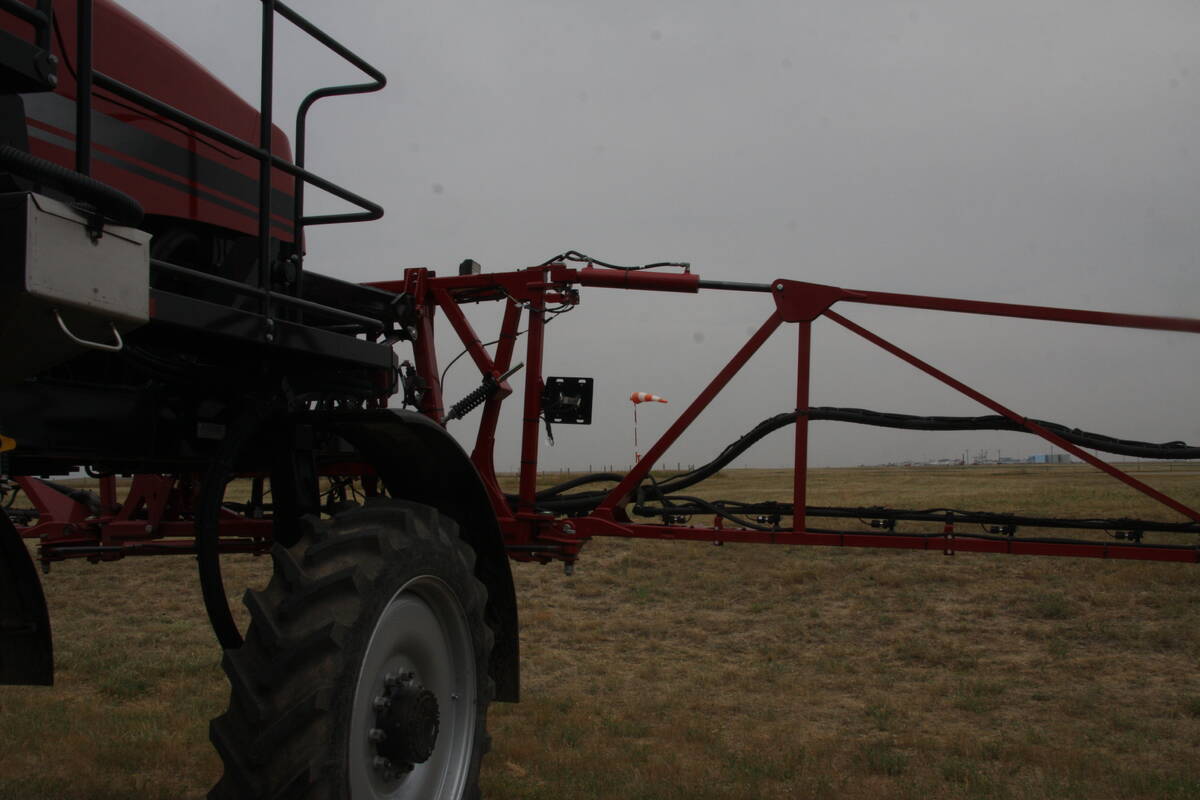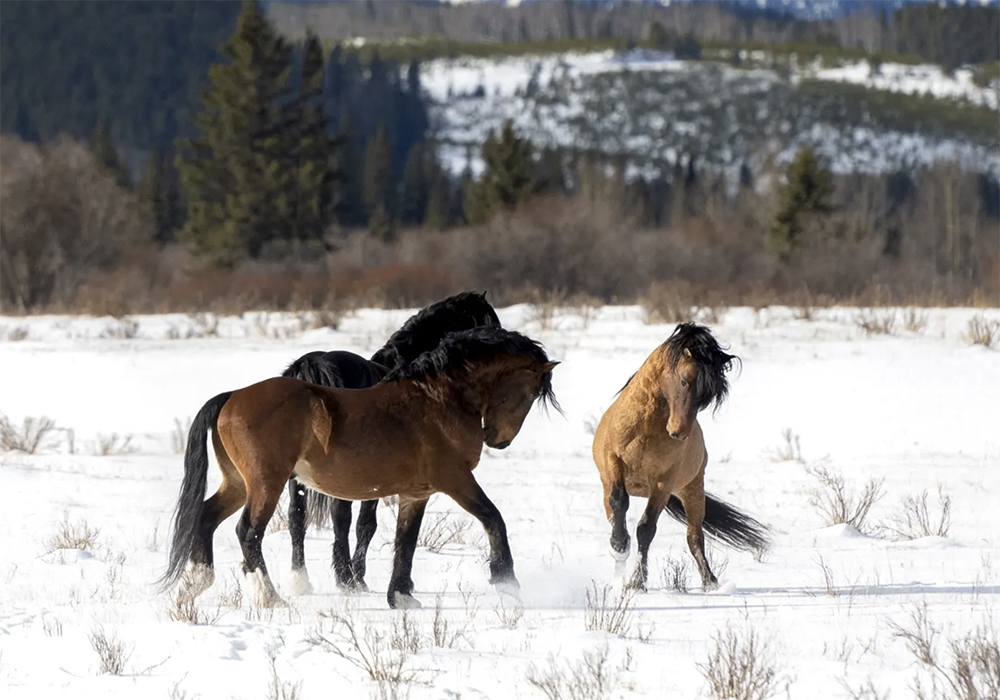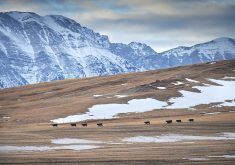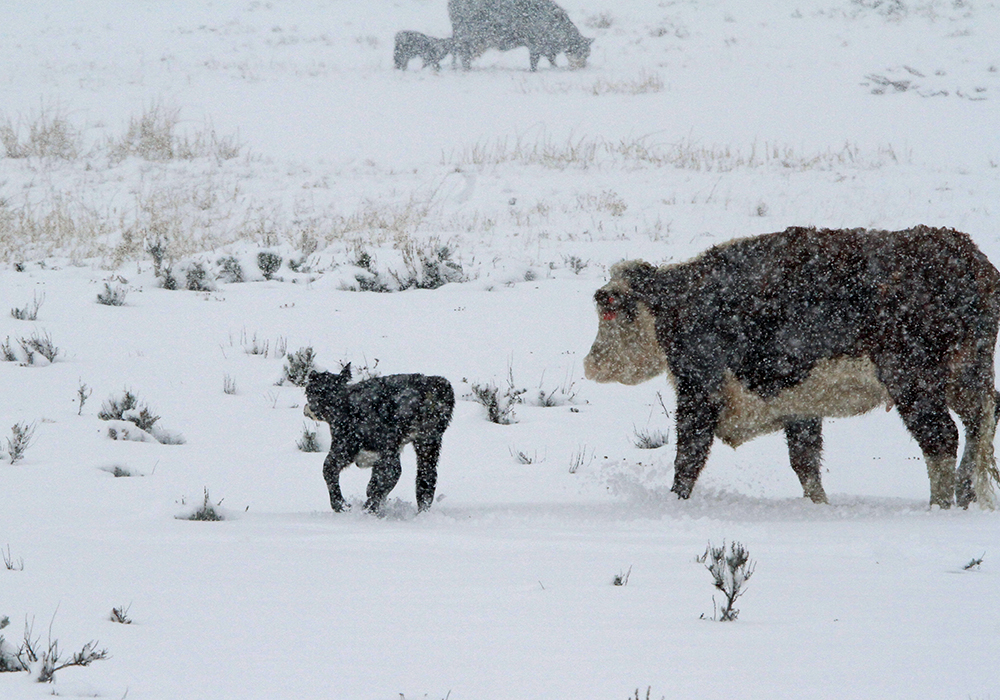Help Alberta Wildies Society says a 51 percent increase in feral horse numbers is too high and is misleading the public
A wild horse advocacy group says reports of a 51 percent increase in free-roaming horses in a key area of Alberta’s Eastern Slopes is based on misleading surveys by the provincial government.
The inflated numbers in the Sundre Equine Management Zone place the population near a level where action must be taken to prevent it from further increasing, says Darrell Glover, president of the Help Alberta Wildies Society (HAWS).
Related story in this issue: Alberta unveils plan for feral horses
Read Also

More work wanted on removing red tape
REGINA — Canadian farmers risk falling further behind competitors if two main federal agencies don’t become more efficient and responsive…
He is concerned that reducing the population will result in it not being large enough to sustain itself and cause it to dwindle due to factors such as predation by grizzlies and wolves.
He said many people oppose measures outlined in a new provincial Feral Horse Management Framework, such as a contraception program and capturing the animals.
“I think that (the provincial government) would tread very, very carefully on how those horses were treated and where they ended up, just based on what possible public backlash they would receive.… What we need is people that keep their hands off the horses so they can sustain a level population.”
However, ranchers whose cattle graze in the same areas as the horses fear their livelihoods will be harmed by the population that’s being allowed by provincial officials, said Ian Mason, vice-president of the Rocky Mountain Forest Range Association. They are concerned the limits may be based less on science and more on politics, he said.
“I think that they’ve kind of put a Band-Aid over it and are saying, ‘1,000 head here or 500 head there, those numbers are fine because that’s what’s there now, so we’ll just leave that.’ Well, it’s already a problem. The numbers are already too high, but they don’t want to step up and say, ‘hey, these numbers are too much.’ ”
Glover and Mason were part of a feral horse advisory committee that provided input for the framework. Mason said he started the committee to get a fair perspective of everyone’s opinion on what can be an emotionally charged issue.
Domesticated horses are a key part of not only the history but also the current practice of ranching in Alberta, he said.
“We all very much love horses. We use them every day. This isn’t a ‘we don’t like the animals’ issue. This is protection and stewardship of the land.”
Aerial surveys by helicopter of free-roaming, or feral horses, were conducted this year by staff from Alberta’s forestry and parks ministry as well as stakeholders such as the Wild Horses of Alberta Society, said ministry director of communications Victoria Person in an email Oct. 13.
“HAWS was offered spots on the department flights but declined to join our flights.”
After the results were reviewed, “the management approach for feral horses will not be changing in the upcoming year,” she said.
“The population levels set under the framework consider the level of populations required for genetics and breeding based on scientific literature from the United States and academia. The framework recognizes the current population size, which has been sustaining its population and horse genetics over the past 100 plus years.”
The framework outlines the management of more than 1,400 free-roaming horses within six equine management zones. These areas are clustered to the east of Banff and Jasper national parks with the Sundre zone having the largest population.
A provincial document detailing the framework said there were at least 969 horses in the Sundre zone in 2023, which is an increase of about 51 percent from last year’s minimum of 642. The numbers are considered minimums because they involve direct counting of horses that were present during visual observations of the survey team during flights.
The count is conducted once per year in the six zones by the provincial government, said a statement by HAWS.
“To keep government officials honest, HAWS also conducts its own independent parallel aerial count using the same flight pattern as the government, then publicly publishes its comparative results.”
Glover said the provincial team flew an extra 500 kilometres within the zone compared to 2022, causing the tally to be artificially inflated by counting extra horses.
“The Sundre zone is 542,000 acres, so it’s biologically impossible for the horses to multiply that fast,” he said.
“But the public doesn’t know that.… They just believe what they hear and what they read from the government.”
The HAWS survey found 684 horses, which is an increase of about four percent from 2022.
The provincial tally of 969 places the population close to the framework’s threshold 2 tier, which is set at 1,000 for the Sundre zone. The limit targets populations at risk of becoming ecologically unsustainable if left unmanaged, with a focus on proactive actions including contraception, adoption and monitoring to ensure they don’t continue to increase.
Person said additional kilometres were flown this year “to better understand horse distribution in areas that experienced recent landscape changes such as logging, which can create new, short-term sources of forage (grass) while forests regenerate.
“The landscape is dynamic and changes regularly, so the department will fly in new areas within the equine management zone to see if there is a movement of horses into new burned areas, or timber harvest.”
Poor snow cover and wind conditions affected the minimum count survey in 2021 and 2022, she said.
“While there is less snow on the ground, it is more difficult to locate and count horses on the landscape. Therefore, some existing horses may have been missed.… The 2023 survey results align with the 2019 survey results, which also occurred when conditions were optimal with good visibility.”


















